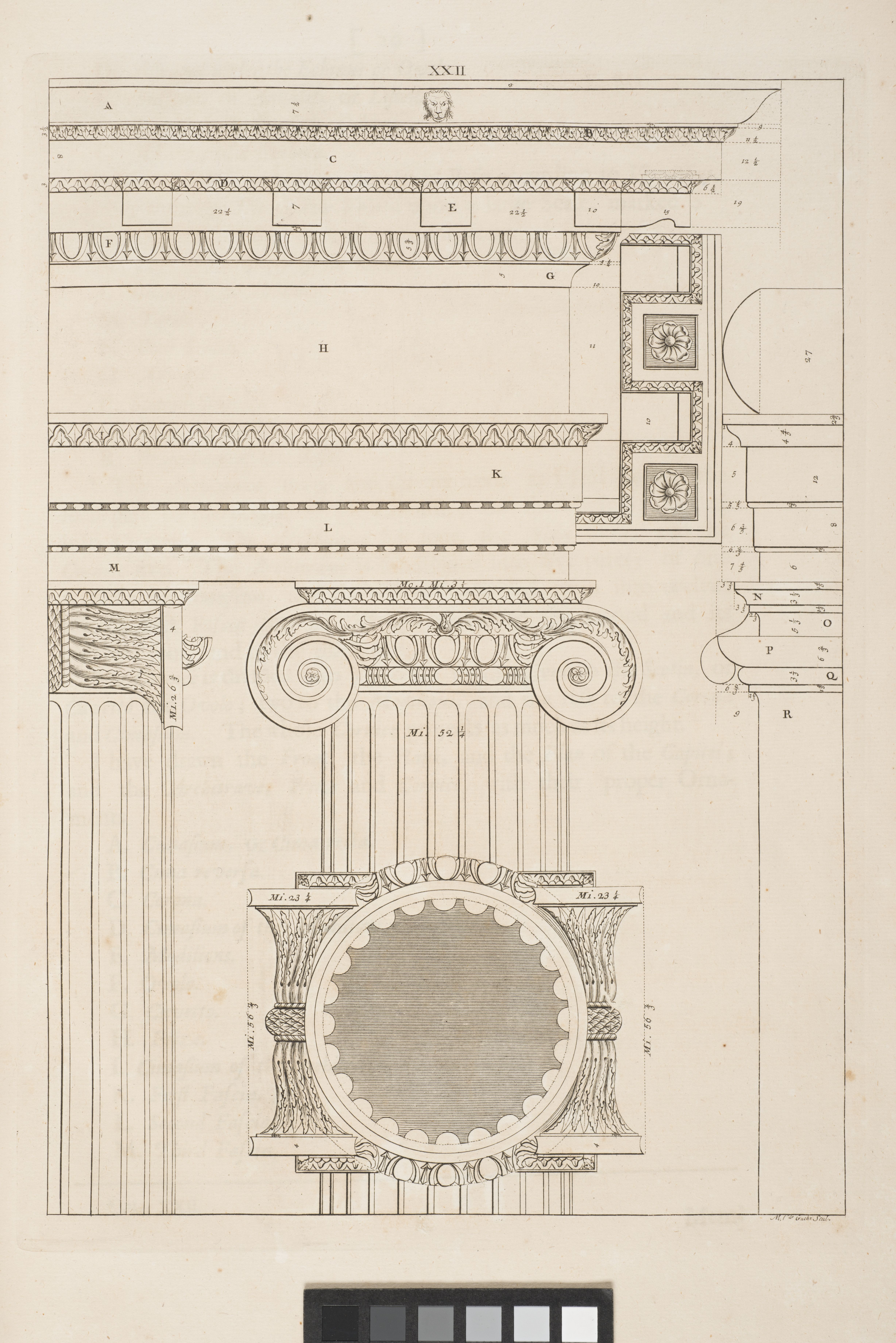The grammar of ornament
Download

The grammar of ornament …
illustrated by examples from various styles of ornament.
One hundred folio plates, drawn on stone
by F. Bedford, and printed in colours by Day and Son
London: Day and Son, 1856
Rare Books Collection
University of Melbourne Library

Rare Books Collection, University of Melbourne Library
The grammar of ornament is a decorative arts source book of almost encyclopaedic scope. It gathers together ornamental designs from vastly different eras, places and cultures: Assyrian, Greek, Byzantine, Turkish, Chinese, Celtic, Medieval, Islamic, Renaissance – and more. These designs are vividly reproduced in 100 chromolithograph plates, an innovative colour process perfected in the 19th century.
Owen Jones was an architect and design theorist, whose achievements included the decoration of the Crystal Palace at the Great Exhibition of 1851. In this book he posits 37 propositions on the principles of decorative arts, including the use of nature as a source, and discusses the decoration of objects of utility. Jones was well travelled and drew many of the designs from applied art examples that he saw in museums or at their original locations.
The grammar of ornament has influenced many artists and architects, notably William Morris and Frank Lloyd Wright. It remains an object admired for its colour and design, and is an essential reference for the history of art.
Teaching ideas
The University of Melbourne’s curriculum is rich and varied, and changes from year to year. For more teaching ideas, contact a collection manager.
Formative Ideas in Architecture
Analyse buildings, places and architectural images in terms of their context, form, planning and theoretical ideas, using The grammar of ornament.
Architecture in the Islamic World
Use The grammar of ornament in identifying and analysing geometric composition, decorative treatment of surfaces, hybridity and cosmopolitanism as important attributes of architecture in the Islamic world.
Architectural Finishes
Study examples from The grammar of ornament in the investigation and conservation of integral, applied and decorative surface finishes and other decorative building elements.
Applied Heritage Conservation Techniques
Consult The grammar of ornament while exploring issues relating to the conservation of built heritage – of building structure, and of interior and exterior decorative finishes.
Historical Thinking
Identify primary sources in the Rare Books Collection, such as The grammar of ornament, that examine disciplinary content from the Australian Curriculum.
Art History: Theory and Controversy
View books from the Rare Books Collection to understand the historical and aesthetic characteristics of the Arts and Crafts movement of the 19th century.
Theories of Art
View early texts in the Rare Books Collection for an introduction to a range of art theories and art-historical methodologies from the past that remain available and relevant today.
Integrated Ophthalmic Sciences
Study applied arts and chromolithography in visual perception to understand the normal human visual system.
Structural Theory and Design
Analyse the use of decorative arts in understanding the procedures and processes involved in designing structures made of structural steel, cold-formed steel, composites, timber or masonry, and produce effective and economical design solutions through correct integration of these materials.
Intersecting objects
-

Andrea Palladio (Italian, 1508–1580)
The architecture of A. Palladio; in four books … revis’d, design’d, and publish’d by Giacomo Leoni …
London: Printed by John Watts, for the author, 1715–20
Rare Books Collection
University of Melbourne Library -

John Ruskin (English, 1819–1900)
The seven lamps of architecture, by John Ruskin; with illustrations drawn and etched by the author
London: Smith, Elder, and Co., 1849
(two copies: one presented by Mr J.M. Joshua, the other by Dr J. Orde Poynton)
Rare Books Collection
University of Melbourne Library
To learn more, visit the Rare Books Collection website.
References
John Kresten Jeperson, ‘Originality and Jones’ The grammar of ornament of 1856’, Journal of Design History, vol. 21, no. 2, Summer 2008, pp. 143–53.